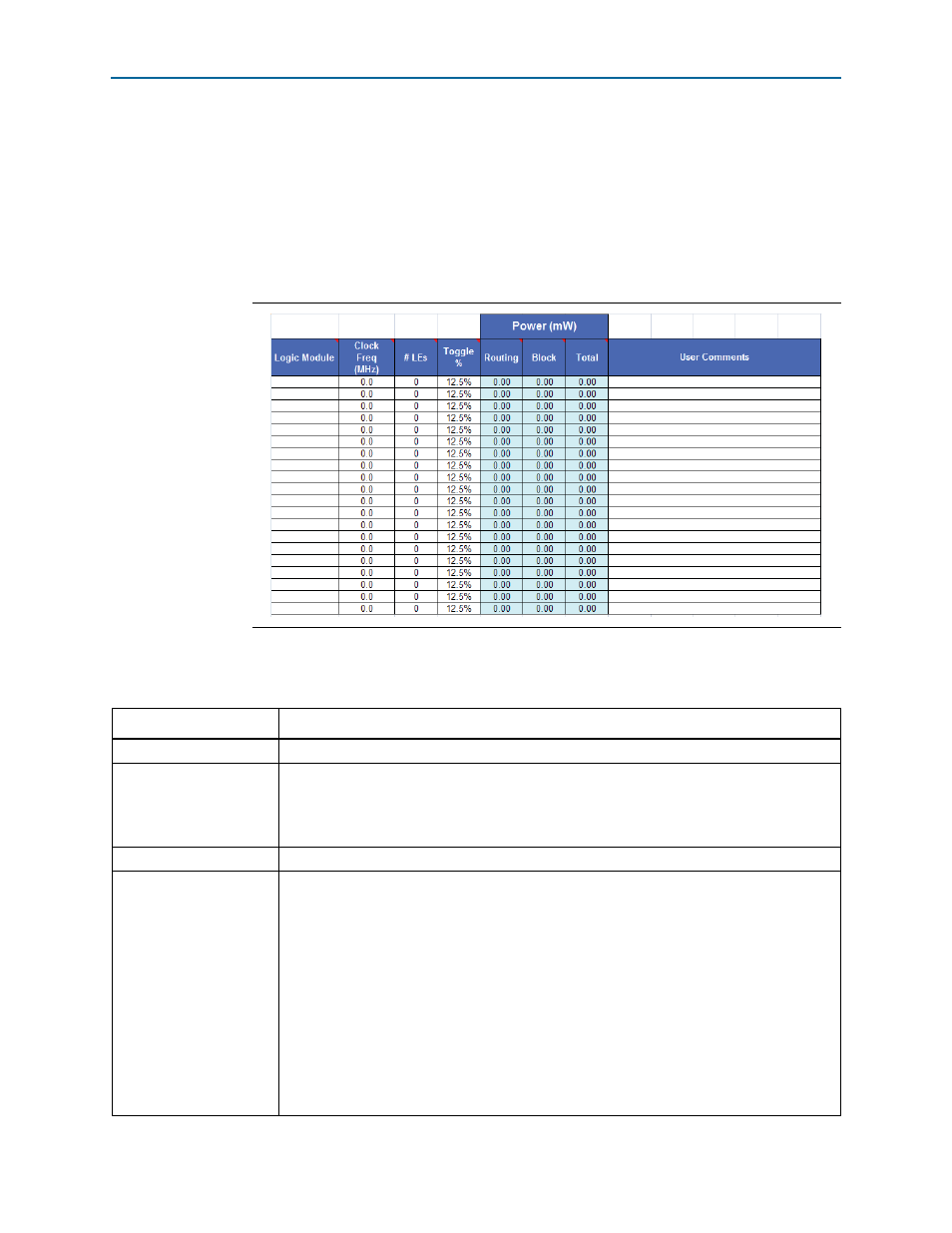Logic section, Logic section –7 – Altera PowerPlay Early Power Estimator for Altera CPLDs User Manual
Page 17

Chapter 2: PowerPlay Early Power Estimator Worksheets
2–7
Power Estimation Using the PowerPlay Early Power Estimator
December 2010
Altera Corporation
PowerPlay Early Power Estimator for Altera CPLDs User Guide
Logic Section
A design is a combination of several design modules operating at different
frequencies and toggle rates. Each design module can have a different amount of
logic. For the most accurate power estimation, partition the design into different
design modules. Each row in the Logic section of the PowerPlay EPE spreadsheet
represents a separate design module.
shows the Logic section in the PowerPlay EPE spreadsheet.
lists the parameters in the Logic section of the PowerPlay EPE spreadsheet.
Figure 2–5. Logic Section in the PowerPlay EPE Spreadsheet
Table 2–7. Logic Section Information (Part 1 of 2)
Column Heading
Description
Logic Module
Specify a name for each module of the design. This is an optional value.
Clock Freq (MHz)
Enter a clock frequency (in MHz). This value is limited by the maximum frequency specification
for the device families.
100 MHz with a 12.5% toggle means that each look-up table (LUT) or flipflop output toggles
12.5 million times per second (100
12.5%).
# LEs
Enter the number of LEs in this module.
Toggle %
Enter the average percentage of logic toggling on each clock cycle. The toggle percentage
ranges from 0 to 100%. Typically, the toggle percentage is 12.5%, which is the toggle
percentage of a 16-bit counter. To ensure you do not underestimate the toggle percentage, use
a higher toggle percentage. Most logic only toggles infrequently; therefore, toggle rates of less
than 50% are more realistic.
For example, a TFF with its input tied to V
CC
has a toggle rate of 100% because its output is
changing logic states on every clock cycle (refer
shows an example of
a 4-bit counter. The first TFF with LSB output cout0 has a toggle rate of 100% because the
signal toggles on every clock cycle. The toggle rate for the second TFF with output cout1 is
50% because the signal only toggles on every two clock cycles. Consequently, the toggle rate
for the third TFF with output cout2 and the fourth TFF with output cout3 are 25% and 12.5%,
respectively. Therefore, the average toggle percentage for this 4-bit counter is
(100 + 50 + 25 + 12.5)/4 = 46.875%.
